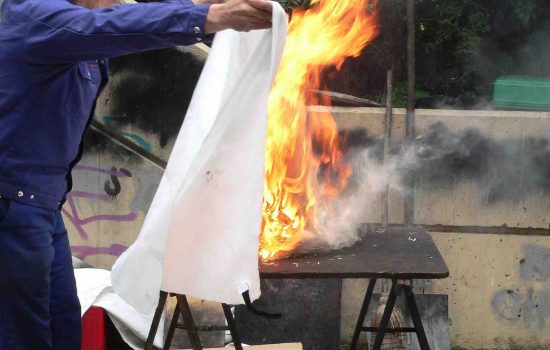
Fire Evacuation Scheme
A fire evacuation scheme is a plan that outlines the actions to take in case of a fire emergency. It helps to ensure everyone’s safety and minimise injuries and property damage. Having a well-designed evacuation scheme in place can save lives in the event of a fire. A fire evacuation scheme should be comprehensive, concise, understandable and tested regularly in the form of a fire drill.
Fire Drill Checklist for Fire Evacuation Schemes
A fire evacuation scheme is a critical component of any building’s safety plan. It’s essential to have an evacuation plan in place to minimize the risk of injury and loss of life in the event of a fire. One of the best ways to prepare for a fire emergency is by conducting regular fire drills. Fire drills allow individuals to become familiar with evacuation procedures and fire safety equipment such as fire alarms and extinguishers.
To ensure the effectiveness of a fire evacuation scheme’s effectiveness, a qualified fire safety expert must conduct a thorough risk assessment. This assessment can identify potential fire hazards and evaluate the effectiveness of current fire safety measures. By entrusting the risk assessment to a qualified expert, building owners and managers can be confident that they have taken the necessary steps to prevent fires and protect their occupants in the event of an emergency.
Fire evacuation schemes and regular fire drills are essential to a building’s safety plan. They provide an opportunity to practice emergency procedures, test fire safety equipment, and identify any weaknesses in the evacuation scheme. By regularly updating the evacuation plan and conducting risk assessments, building owners and managers can help ensure their occupants’ safety in the event of a fire emergency.
Creating a Fire Drill Checklist
A fire drill is an essential part of fire safety, and it helps ensure that everyone in a building knows what to do in a fire emergency. A fire drill checklist is a step-by-step guide that outlines the necessary actions to take during a fire drill. Check below a few steps to guide your next Fire Drill:
Step 1: Identify the Fire Drill Team
The first step in creating a fire drill checklist is identifying the fire drill team. The fire drill team is responsible for planning, organising, and conducting the fire drill. The team should consist of members with the necessary skills, knowledge, and experience in fire safety.
Step 2: Develop an Evacuation Plan
The next step is to develop an evacuation plan. The evacuation plan should include the following:
- Emergency exit routes
- Meeting points
- Evacuation procedures
- The location of fire extinguishers
The evacuation plan should be clear, concise, and easy to understand. It should also be posted in visible areas throughout the building.
Step 3: Conduct a Risk Assessment
A risk assessment should be conducted to identify potential fire hazards in the building. The risk assessment should include the following:
- Sources of ignition
- Flammable materials or hazardous substances
- Electrical hazards
- Emergency lighting
To ensure an accurate and thorough risk assessment, it’s important to have a qualified fire safety expert conduct the assessment. This expert should have the necessary knowledge, experience, and training to identify potential fire hazards, evaluate fire safety measures, and provide recommendations to improve the safety of the building and its occupants.
Step 4: Train the Staff
A qualified fire safety expert should train the staff on the evacuation plan, emergency procedures, and fire safety equipment. The staff needs to be trained to ensure their readiness in case of an emergency.
Step 5: Conduct Regular Fire Drills
Conduct regular fire drills to ensure that everyone in the building knows what to do in case of a fire emergency. These drills should test the evacuation plan and be conducted at different times of the day and under different conditions.
Step 6: Evaluate and Update the Fire Drill Checklist
To ensure the fire drill checklist is up-to-date and reflects any changes in the building’s structure or occupancy, it’s essential to evaluate and update it regularly.
Virtual Reality Fire Drill and Evacuation Schemes
Virtual reality (VR) fire training is becoming an increasingly popular method for training individuals in various scenarios, including fire evacuation schemes. Individuals can experience a simulated fire drill in a safe and controlled environment using virtual reality technology. This type of training can help individuals prepare for a real fire emergency and become familiar with the procedures and steps to take in the event of a fire. By incorporating virtual reality training into fire evacuation schemes, individuals can gain a better understanding of fire safety, which can ultimately save lives in the event of a real emergency.




